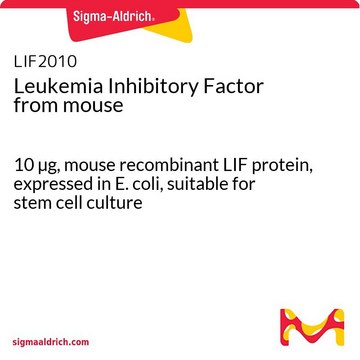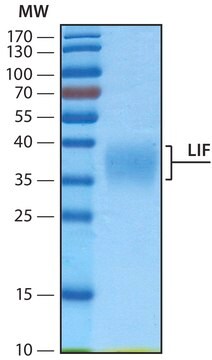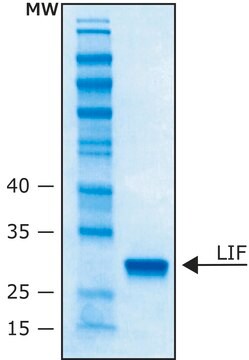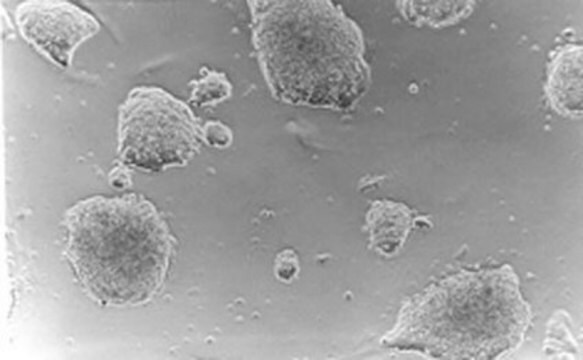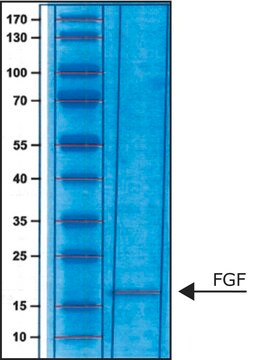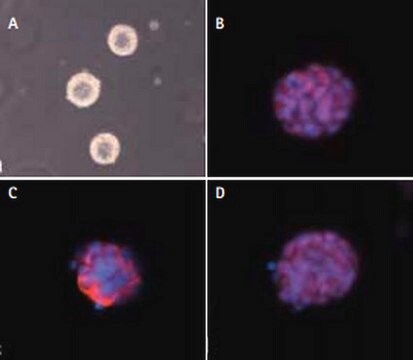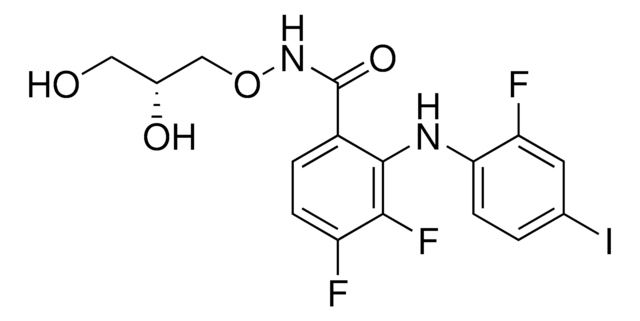L5158
Leukemia Inhibitory Factor from mouse
≥95% (SDS-PAGE), recombinant, expressed in E. coli, buffered aqueous solution, suitable for cell culture
Sinonimo/i:
LIF
About This Item
Prodotti consigliati
product name
Leukemia Inhibitory Factor from mouse, LIF, recombinant, expressed in E. coli, 10 μg/ml, buffered aqueous solution, suitable for cell culture
Ricombinante
expressed in E. coli
Livello qualitativo
Saggio
≥95% (SDS-PAGE)
Forma fisica
buffered aqueous solution
Qualità
endotoxin tested
tecniche
cell culture | mammalian: suitable
Temperatura di conservazione
2-8°C
Cerchi prodotti simili? Visita Guida al confronto tra prodotti
Applicazioni
- as a component of enriched co-culture media
- as a supplement in Dulbecco′s modified eagle′s medium (DMEM)/F12 medium for culturing heart cells
- as a component in maintenance medium for maintaining embryonic stem cells
- to treat ovaries in ovarian culture
Azioni biochim/fisiol
Stato fisico
Risultati analitici
Note legali
Codice della classe di stoccaggio
11 - Combustible Solids
Classe di pericolosità dell'acqua (WGK)
WGK 3
Punto d’infiammabilità (°F)
Not applicable
Punto d’infiammabilità (°C)
Not applicable
Dispositivi di protezione individuale
Eyeshields, Gloves, type N95 (US)
Certificati d'analisi (COA)
Cerca il Certificati d'analisi (COA) digitando il numero di lotto/batch corrispondente. I numeri di lotto o di batch sono stampati sull'etichetta dei prodotti dopo la parola ‘Lotto’ o ‘Batch’.
Possiedi già questo prodotto?
I documenti relativi ai prodotti acquistati recentemente sono disponibili nell’Archivio dei documenti.
I clienti hanno visto anche
Il team dei nostri ricercatori vanta grande esperienza in tutte le aree della ricerca quali Life Science, scienza dei materiali, sintesi chimica, cromatografia, discipline analitiche, ecc..
Contatta l'Assistenza Tecnica.